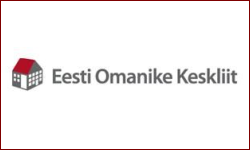 Growth in employment slowed in the first half of 2016, though it was still faster than forecast
Growth in employment slowed in the first half of 2016, though it was still faster than forecast- Employment in the industrial sector was down slightly, but it was up in services
- Growth picked up in the average gross monthly wage, and wage growth was broadly based
- Labour costs have risen fast as a share of GDP since 2015, indicating there are imbalances in the economy
Despite slow economic growth, demand remained high in the labour market as total employment was up by 1.8% in the first half of 2016 and growth in the average wage over the year accelerated to 7.8%. The difference between the situation in the labour market and that in the economy as a whole can partly be explained by the differences in the performance of economic sectors. Employment fell a little in the capital intensive industrial sector and wages rose by less than the average for the economy, while in the labour intensive services sector employment grew and wages rose at an increasing rate. Partly because of increased demand, which led wages to rise fast, but also because of structural reforms in the labour market, the number of people who were active in the labour market increased by more than 1%.
The unemployment rate remained at 6.5% in the first half of 2016, which is about the same level as a year earlier, as short-term unemployment rose but long-term unemployment fell. The data from Töötukassa, the unemployment insurance fund, for the registered unemployed showed an increase in the number registering as unemployed because their working relationship had ended, though there was also a rise in the number who left the register because they had found work.
The average full time monthly gross wage grew at a faster rate in the first half of 2016 than a year earlier. Wages rose faster in the private sector, at foreign-owned employers in the first quarter and at Estonian-owned employers in the second. Wage growth in the public sector slowed at the same time. Although the rise in the minimum wage only directly affects a small percentage of those receiving wages, it can play a role together with rising wages in the public sector in setting expectations for wage rises. Generally high expectations for wage rises make it harder for employers to keep wage costs in line with the performance of companies.
The gap between labour costs and labour productivity growth was slightly narrower in the first half of 2016 than in 2015. Productivity fell by less than before, and the growth in the payroll per employee was somewhat slower. The payroll grew notably faster in 2015 and 2016 as a share of the value added created in the economy than it did in the preceding years. In 2013 it was 45% of GDP, but in the past four quarters it averaged 48%. This indicates that the situation in the labour market remains stressed, and labour shortages are creating pressure on wages. Growth in the share of labour costs means that corporate profit margins shrink and if other conditions remain unchanged, Estonia becomes less attractive as a place to base production. Given, however, that the earlier estimates of the size of the payroll in recent years have been revised downwards and GDP has mainly been revised upwards, there is still some uncertainty about the estimates of the rise in unit labour costs in 2015–2016.
Orsolya Soosaar
Eesti Panga ökonomist













